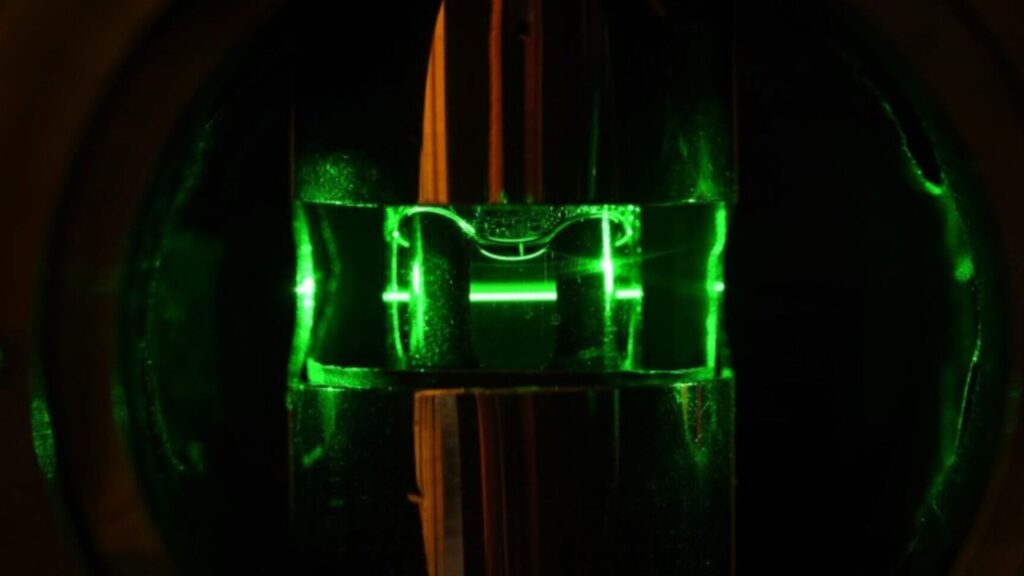At the molecular level, glass has its own internal clock. These physicists were finally able to measure it statistically, which highlighted a strange flow of time in this material: it is reversible. But that doesn’t mean glass aging can be reversed. Be careful, brain twisting on the program.
We’re getting old. It’s inexorable. Because time follows the second law of thermodynamics: entropy, chaos, or the tendency towards disorder. The same goes for objects. In fact, time is irreversible: if you break an object, you will not be able to rewind it to repair it (disorder… happens in order). But as always, physics can surprise where you least expect it, and a new study published in Nature Physics on January 26, 2024, clearly stirs the brain about the passage of time. At least at the molecular scale of a specific type of material.
What we already knew is that a material like glass has its own internal clock. To put it simply: if the glass had a watch, it would not display the same flow of time as your watch. Within this material, the molecules are entangled in a constant movement: they constantly aim for the most favorable energy state, the properties of the material evolve over time. Glass ages, but this may be imperceptible to us, over thousands, millions, billions of years.
This “material time” (material time) has been known for half a century, but has never been able to be truly measured. This is what these American physicists tackled, who describe their approach as a “ immense experimental challenge “. Not only did they manage to capture this internal clock of glass, but its properties were strange.
“This leaves us with a mountain of unanswered questions”
To carry out this project, these physicists pointed laser beams at a sample of glass. As the light is captured by the molecules, these beams were able to bounce off those contained in the material. So, by filming with a cutting-edge, extremely sensitive camera, they obtained patterns: fluctuations, made of light points, dark points. These fluctuations were then translated into statistics, in order to measure how they evolve over time. This is how the internal clock of the glass was obtained. But this internal clock does not behave in a usual way.

Due to entropy, time moves forward for us in a straight line. In fact, there is a beginning, a middle, and an end. If you rewind a video on your watch, it becomes clear: the needle turns around, which reminds you that what happened has already happened in a specific and absolutely irreversible order. Except that it wouldn’t work the same way for the glass “watch”.
The internal clock of the glass would rather be comparable to a pendulum – with balanced, constant movement. If you film this pendulum, then rewind the video, it will be impossible to place a beginning, a middle and an end. No matter when the video is, time will be indefinite. In the same way, the “time of the material” is made up of fluctuations of molecules which can be looked at from different points of view without this having an impact on temporality. This is why time is then said to be reversible: molecular fluctuations are not in a straight line with a beginning and an end like two immovable fixed points. If you rewind the time of the glass, the movement of the molecules does not change due to this rewind (in short: even if you allow the glass to go back in time, it will not rewind the fluctuations in time).
This phenomenon also seems to occur in plastic. This means that it belongs to a type of material called “disordered”.
“This does not mean that the aging of materials can be reversed”
“ However, this does not mean that the aging of materials can be reversed », Specify the physicists. On the contrary: this shows that the aging of the material is inevitable, but obeying its own flow. And that everything that happens in the material – all its molecular fluctuations – does not necessarily contribute to its aging. The authors give an illustration: children playing in the back seat of a car do not contribute to the movement of the car.
You have questions ? This is good news, as do the physicists behind the discovery: “ This leaves us with a mountain of unanswered questions. », admits Thomas Blockowicz, one of the authors.


Subscribe to Numerama on Google News so you don’t miss any news!
